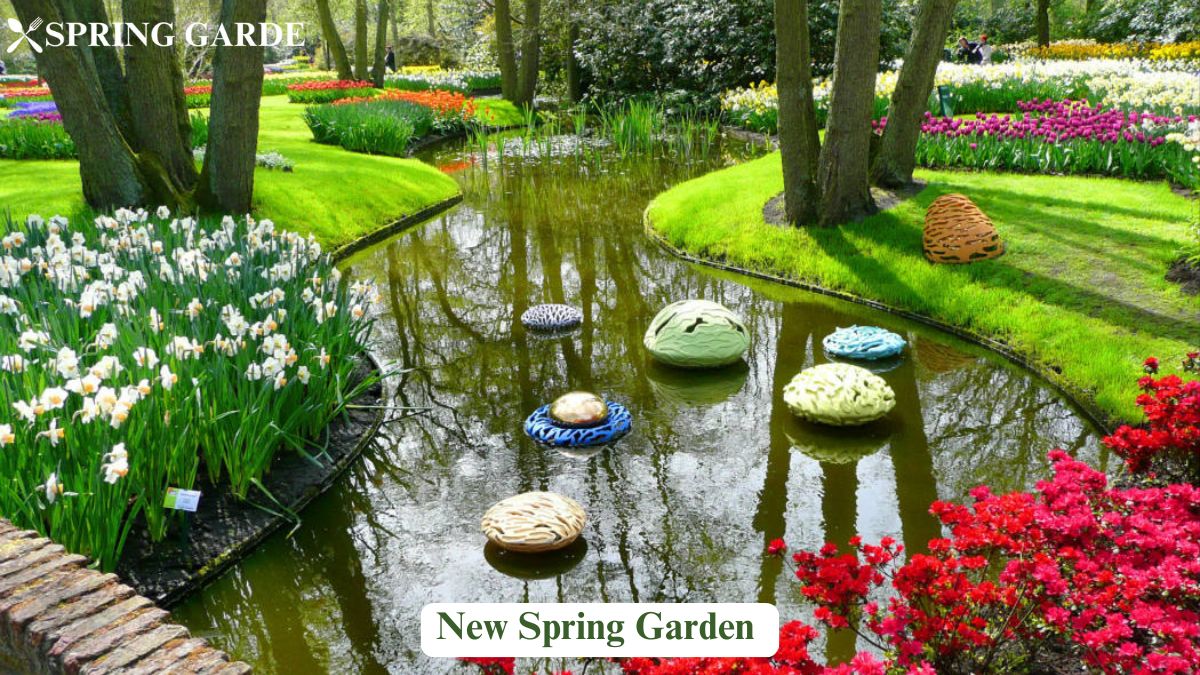Spring is the season of renewal, and for garden enthusiasts, it means fresh blooms, vibrant greens, and the joy of nurturing plants back to life. Whether you’re a seasoned gardener or a beginner, creating a new spring garden requires thoughtful planning, soil preparation, and the right plant choices. This guide will walk you through everything you need to know to start and maintain a flourishing spring garden.
Gardening in spring offers multiple benefits, from growing fresh vegetables and herbs to enhancing the beauty of your outdoor space. With longer daylight hours and moderate temperatures, it’s the perfect time to get your hands in the soil and embrace the magic of nature. Let’s dive deep into the essential steps to create a successful garden this season.
Planning Your Spring Garden
Choosing the Right Location
Picking the perfect spot for your spring garden is essential. Here are the key factors to consider:
- Sunlight Exposure: Most vegetables and flowers require at least 6-8 hours of direct sunlight daily. Observe your garden space throughout the day to determine the best sunlit areas.
- Soil Drainage: Avoid areas prone to waterlogging; good drainage ensures healthy roots. Raised beds or adding organic matter can improve drainage.
- Wind Protection: Strong winds can damage plants. Use fences, shrubs, or trellises as wind barriers to prevent breakage and dehydration.
- Proximity to Water Source: Position your garden close to a hose or water supply to make watering convenient.
Deciding What to Plant
Your plant selection depends on your gardening goals:
- Vegetables: Lettuce, radishes, carrots, and peas thrive in spring’s cool temperatures.
- Flowers: Pansies, tulips, and daffodils bring early color to your garden.
- Herbs: Basil, mint, and cilantro are easy to grow and useful in the kitchen.
- Native Plants: Consider including native species that require less maintenance and attract pollinators.
Choosing a mix of perennials and annuals ensures a variety of colors and textures throughout the season.
Companion Planting Strategies
Companion planting enhances growth and deters pests. Here are some beneficial pairings:
| Companion Plants | Benefits |
| Tomatoes & Basil | Improves flavor & repels pests |
| Carrots & Onions | Deters carrot flies & onion pests |
| Lettuce & Radishes | Radishes loosen soil for lettuce |
| Marigolds & Beans | Marigolds deter bean beetles |
| Cucumbers & Nasturtiums | Nasturtiums repel aphids |
Planning your garden layout with these combinations can naturally boost plant health and productivity.
Preparing the Soil for a Thriving Garden
Testing Soil pH and Nutrients
Healthy soil leads to healthy plants. Test your soil’s pH and nutrient levels using a soil testing kit. Ideal ranges:
- Vegetables: pH 6.0-7.0
- Flowers: pH 6.0-7.5
- Herbs: pH 6.5-7.0
If your soil is too acidic (low pH), add lime. If it’s too alkaline (high pH), incorporate sulfur or organic matter like peat moss.
Adding Compost and Organic Matter
Compost enriches the soil, improving water retention and aeration. Add organic matter such as:
- Composted manure: Provides essential nutrients.
- Peat moss: Improves water-holding capacity.
- Worm castings: Enhance soil structure and fertility.
- Mulched leaves: Break down into nutrient-rich humus.
Eco-Friendly Weed Control
Prevent weeds naturally by:
- Mulching: Use wood chips or straw to block sunlight.
- Hand-pulling: Best for small gardens to prevent invasive growth.
- Boiling water: A chemical-free way to kill weeds in pathways.
- Planting ground covers: Like clover or creeping thyme to suppress weed growth.
Selecting the Best Plants for Spring
Early Bloomers for a Vibrant Start
- Tulips: Thrive in full sun with well-drained soil, offering a range of colors.
- Daffodils: Perennial flowers that return yearly and deter rodents.
- Crocuses: Bloom early, even through snow, signaling the arrival of spring.
- Hyacinths: Known for their sweet fragrance and bold colors.
Hardy Vegetables for a Bountiful Harvest
- Lettuce: Quick-growing and frost-resistant, perfect for salads.
- Radishes: Harvest-ready in just 3-4 weeks, making them great for beginners.
- Peas: Prefer cool temperatures and rich soil, ideal for early spring planting.
- Kale & Spinach: Nutrient-dense greens that tolerate cold weather well.
Fragrant Herbs to Elevate Your Garden
- Mint: Grows aggressively, best in containers to prevent spreading.
- Basil: Needs warm soil and plenty of sun; ideal for culinary use.
- Chives: Hardy and perfect for adding flavor to dishes.
- Rosemary & Thyme: Low-maintenance, drought-resistant herbs with aromatic leaves.
Conclusion & Final Tips
Spring gardening is a rewarding experience, bringing color, food, and joy. By preparing your soil, selecting the right plants, and maintaining proper care, you can enjoy a thriving new spring garden all season long. Start small if you’re new to gardening and expand as you gain confidence.
Don’t forget to:
- Observe weather conditions and protect tender plants from unexpected frosts.
- Keep a gardening journal to track growth patterns and planting success.
- Rotate crops to maintain soil fertility and prevent disease build-up.
- Stay consistent with weeding, watering, and pruning.
With the right strategies, your garden will be bursting with life, color, and delicious homegrown produce in no time!
FAQs
What is the best time to start a spring garden?
After the last frost date in your area.
How often should I water my spring garden?
About 1 inch per week.
What vegetables grow best in spring?
Lettuce, spinach, radishes, and peas.
How can I protect plants from unexpected frost?
Use row covers or mulch.
Do I need fertilizer for my spring garden?
Yes, organic compost is ideal.
How do I keep pests away naturally?
Neem oil, diatomaceous earth, and companion planting.
Should I start seeds indoors or outdoors?
Start tender plants indoors; hardier ones can be direct sown.
How can I improve my garden soil?
Add compost, test pH, and aerate.
What flowers bloom first in spring?
Tulips, daffodils, and crocuses.
How do I attract more pollinators?
Plant native flowers and avoid pesticides.

